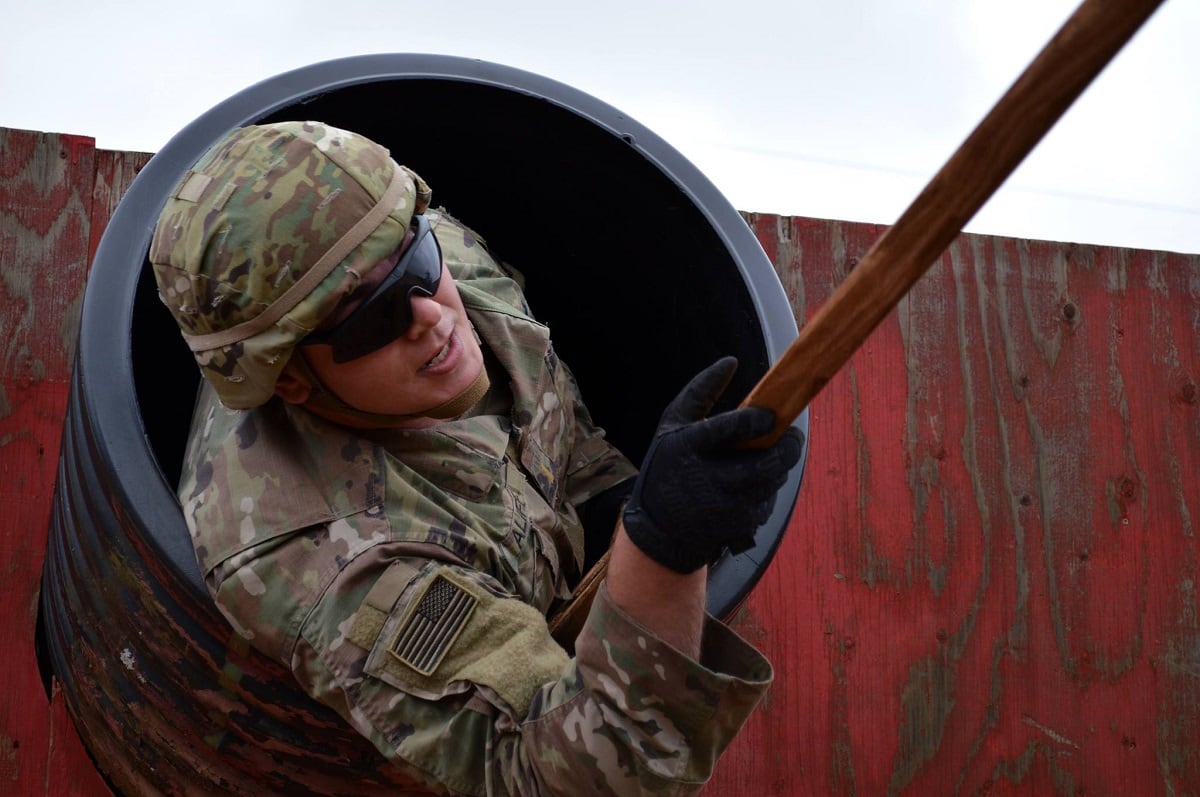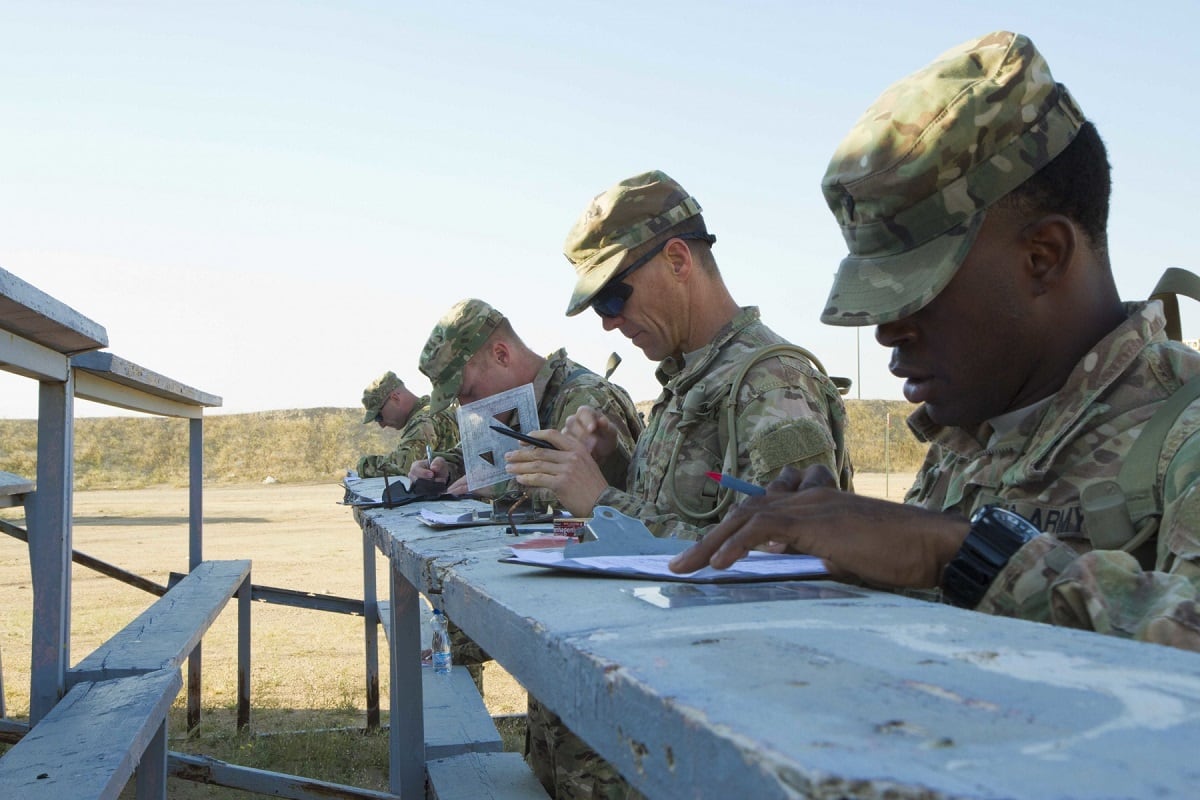Editor’s note: This story has been updated to include links to documents on how to apply for a deferment to professional military education.
The Army is now allowing a select group of soldiers to be promoted before they complete their required professional military education.
The latest update to the Army’s STEP — or select, train, educate and promote — policy, was effective April 7.
The deferment to professional military education targets soldiers who are deployed and unable to break away for school, said Command Sgt. Maj. Dave Davenport, the senior enlisted soldier for Training and Doctrine Command.
Eligible soldiers “must be fully qualified for promotion, and the only thing they’re missing is PME,” Davenport said. “They must be operationally deployed, [and] there’s a lack of training opportunity.”
Apart from those exceptions, the Army’s policy has not changed, Davenport said.
“PME remains a promotion requirement,” he said. “All we’re trying to do, because of the op tempo, is to try to [provide] a template for those that seek out a deferment to PME or exception to policy for those who are deployed.”
Soldiers who receive a PME deferment can be promoted, but they then have 24 months after returning from deployment to get to school, Davenport said.
Davenport said he expects just a small number of soldiers will qualify for a deferment to PME.
“We don’t want to penalize soldiers, especially in low-density MOSs,” he said.
Deployed soldiers serving in small military occupational specialties whose PME courses are offered only two or three times a year are a good example of those who may need a PME deferment.
“They’re doing everything, they’re fit, they’ve knocked out their [Structured Self-Development], they’re doing everything right, but they don’t have the opportunity to attend PME like those in the State or home station,” Davenport said.
Another example is a deployed squad leader, he said.
“Squad leaders are very important to our Army,” Davenport said. “So, if there’s a sergeant team leader doing the right thing, leading soldiers every day in combat, we may not necessarily want to break them away for PME, even though some units are doing that.”
The option to receive a deferment is “another tool a commander can use to build more squad leaders,” Davenport said.
As of May 1, Army leaders continued to work on official guidance on how to apply for a deferment. However, more information is available here and here.
The Army began implementing STEP in January 2016.
Under STEP, soldiers must complete a regimen of online and resident military education courses to be considered for, and then promoted to, the ranks of sergeant through sergeant major.
Since the policy was put into place, STEP has “produced fantastic results,” Davenport said.
“When we started this journey almost three years ago now, we had about 14,000 soldiers in the backlog,” Davenport said.
That number is now down to 1,800 soldiers who still need to attend their required PME.

How did the Army do it?
“We really holistically looked at our processes and made sure we were getting the right soldier at the right time to school,” Davenport said.
TRADOC also added capacity in the schoolhouses as needed, and streamlined the instructor certification processes in order to get them into classrooms more quickly, he said.
One example is in the Basic Leader Course, which is required for promotion to sergeant. The Army sent a mobile training team to Afghanistan to run 10 iterations of the course for soldiers there. There also is a BLC mobile training team in Kuwait, run by the National Guard and Army Reserve.
His biggest concerns with the backlog, Davenport said, are the noncommissioned officers who have been in grade longer than three years. There are about 500 of them among the 1,800 who need school.
“There are reasons why they’re not going to school, and they are reasons we, TRADOC, don’t control,” Davenport said. “That’s where the partnership with FORSCOM comes in.”
TRADOC has been working closely with Forces Command to get units to identify soldiers who need school and work with them to get there, Davenport said.
Units also have been playing their part, he said.
“A lot of units are training ahead,” Davenport said.
For example, the 1st Armored Division has increased its number of instructors so more soldiers can get the PME they need before deploying.
Davenport said he hopes soldiers — and their commanders — understand the importance of professional military education.
But he also said he understands soldiers shoulder a high operations tempo.
“I want them to know STEP is not going away,” he said. “This deferment to PME does not relieve them of the requirements of complete PME for their grade. We’re not going back. We’re just acknowledging the op tempo for our Army will require us to do this.”
Michelle Tan is the editor of Army Times and Air Force Times. She has covered the military for Military Times since 2005, and has embedded with U.S. troops in Iraq, Afghanistan, Kuwait, Haiti, Gabon and the Horn of Africa.




